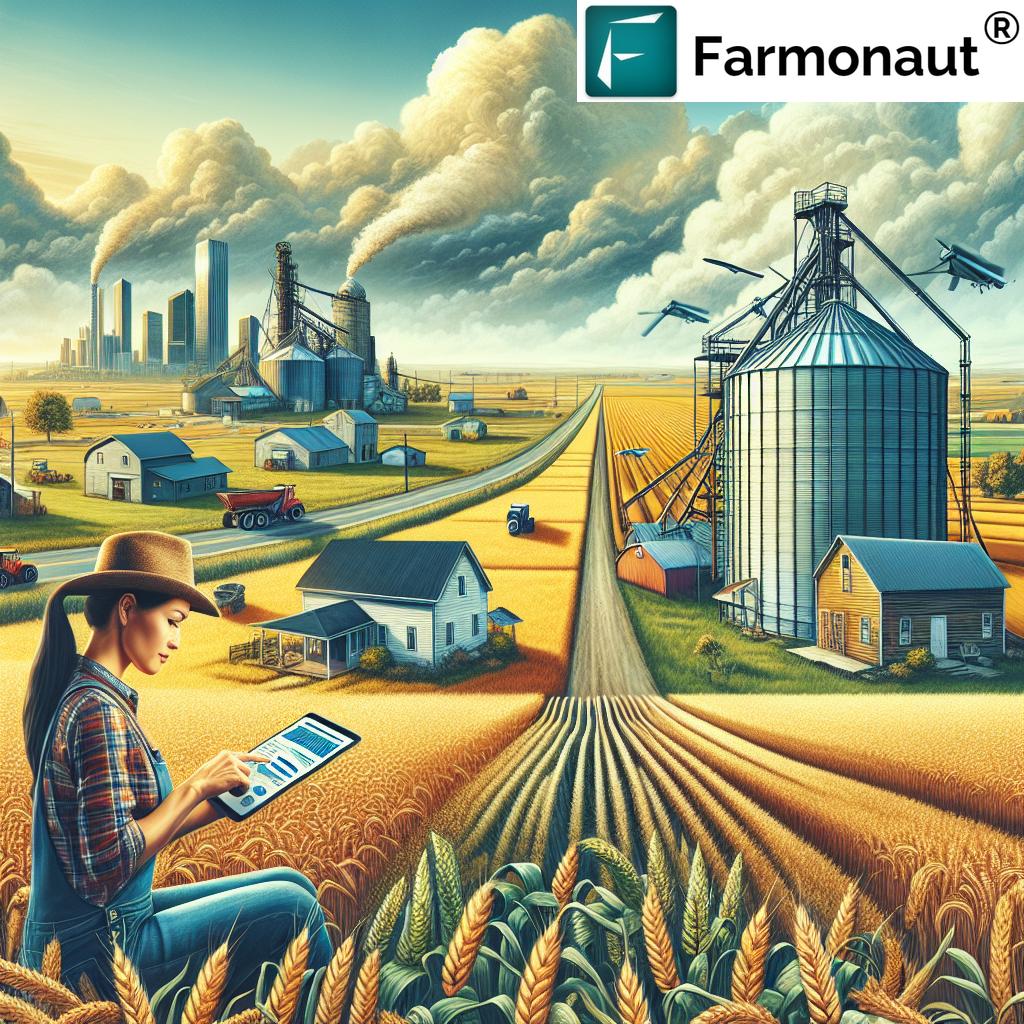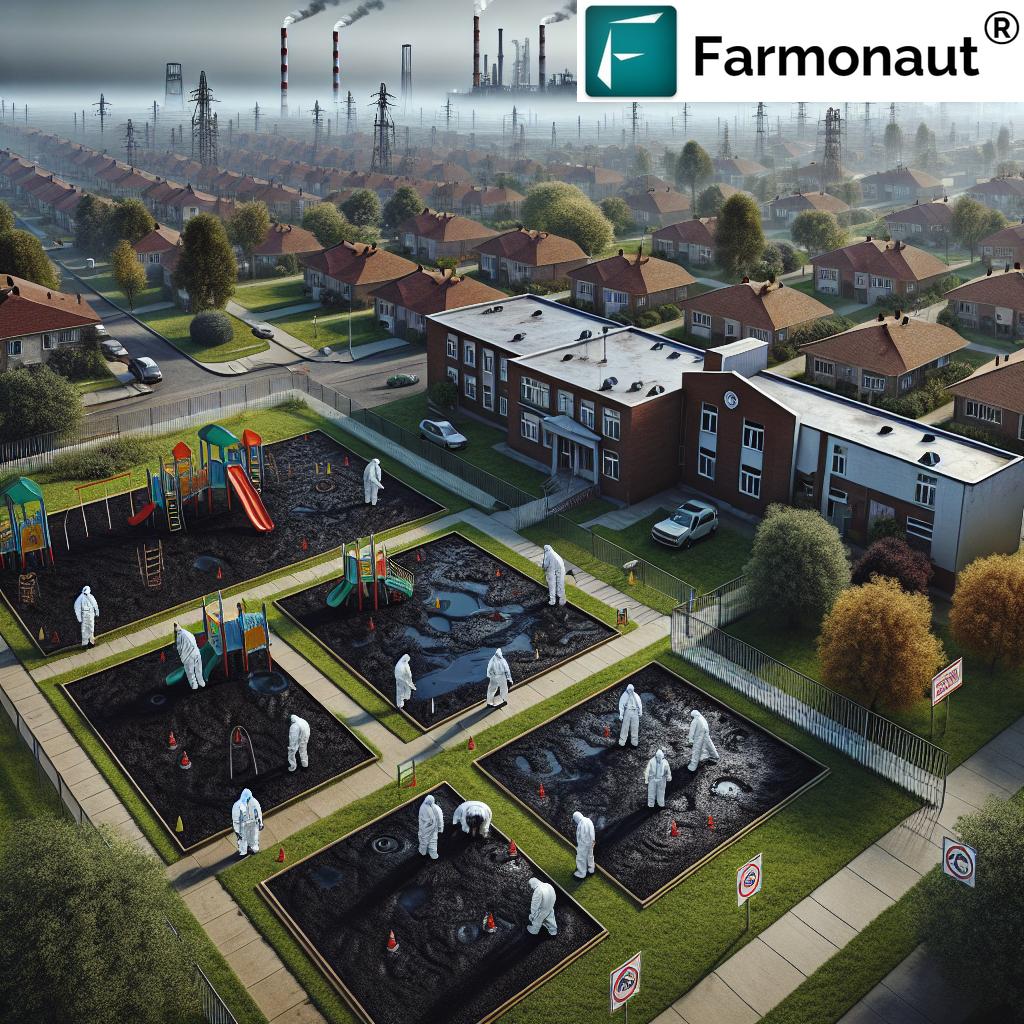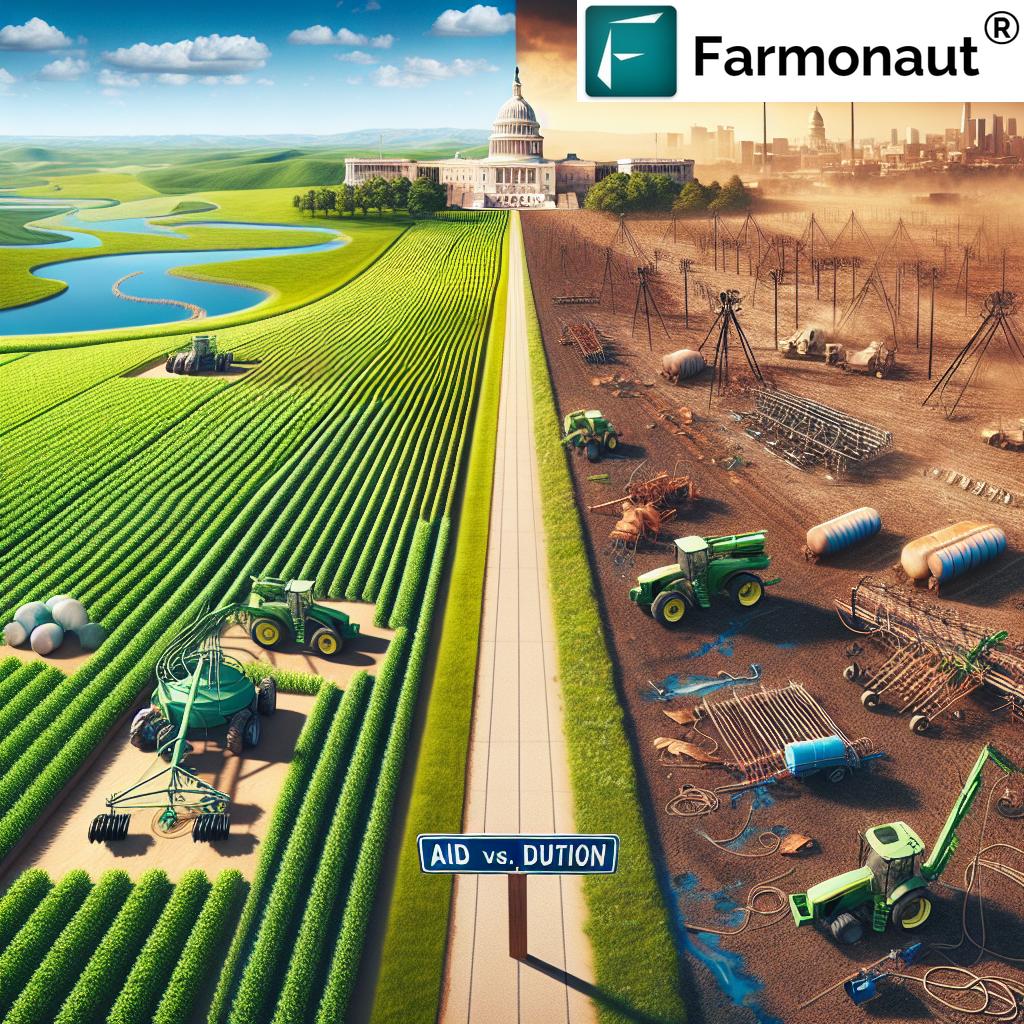Data in Agriculture: US & India 2025 Insights
- Introduction
- Trivia
- The Significance of Data in Modern Agriculture
- US Agriculture Data: Leading the Way with Technology
- Agriculture Data India: Bridging Tradition and Technology
- Comparative Technology Adoption Table: US vs India (2025)
- Satellite Innovation & Farmonaut’s Role in Digital Agriculture
- Key Data and Agriculture Technologies Transforming 2025
- Sustainability and Data-Driven Agriculture
- Challenges and the Road Ahead
- FAQs — Data in Agriculture (2025)
- Conclusion
“By 2025, data-driven agriculture is projected to boost crop yields by up to 20% in both the US and India.”
Introduction: Data in Agriculture Transforming US and India in 2025
In the rapidly evolving landscape of agriculture, data in agriculture is no longer a futuristic concept—it’s a dynamic reality shape-shifting the future of food, sustainability, and economic prosperity. As we enter 2025, both the US and India emerge as agricultural powerhouses, leveraging innovation and technology to optimize yields, enhance resource efficiency, and mitigate environmental challenges.
This comprehensive article explores the multifaceted importance of data and agriculture, focusing on its critical application in the United States and India. We’ll uncover how cutting-edge technologies, from IoT devices to AI and satellite imagery, are revolutionizing agricultural practices; how barriers and opportunities differentiate US agriculture data from agriculture data India; and what the road ahead looks like as global farming paradigms shift toward a data-centric, sustainable future.

Explore Our Satellite Monitoring App
The Significance of Data in Modern Agriculture
Data in agriculture encompasses a broad spectrum of information, covering everything from soil health metrics, weather patterns, and crop genetics to pest prevalence, market trends, and supply chain logistics. This data enables precision agriculture by offering micro-level control over vital resources—helping farmers:
- Monitor crop and soil health using remote sensors and satellite imagery
- Forecast weather trends and plan agricultural activities accordingly
- Apply fertilizers and water judiciously to maximize productivity and minimize waste
- Track and respond to pest or disease outbreaks promptly
- Adjust farming timelines to market prices and demand signals
- Reduce food waste through smarter supply chain management
Precision agriculture is now the new standard for competitive and sustainable farming. By leveraging real-time datasets, terrestrial and satellite-based IOT devices, AI-powered algorithms, and machine learning technologies, the global farming community is realizing unprecedented levels of efficiency, resilience, and profitability.
“Over 70% of US and Indian farms are expected to adopt advanced data analytics for sustainable farming by 2025.”
How Does Data in Agriculture Enable Innovation?
- Resource Optimization: With intelligent data agriculture solutions, farmers can ensure that fertilizers and irrigation are applied only where needed, substantially reducing cost and waste.
- Environmental Protection: By monitoring pest prevalence, soil health metrics, and weather forecasts, stakeholders can proactively prevent environmental damage, mitigate risk, and ensure long-term sustainability.
- Yield Enhancement: Use of advanced algorithms, predictive models, and AI/ML ensures higher yields by enabling timely sowing, harvesting, and protection of crops.
US Agriculture Data: Leading the Way with Technology
The United States has long been recognized for its leadership in agricultural innovation. In 2025, this reputation stands strong—driven by massive adoption of digital tools, IoT-enabled sensors, widespread satellite imagery use, and significant government support. This “big data” approach powers efficiency across vast and diverse farmlands.
Key Pillars of US Agriculture Data in 2025
- Comprehensive Datasets: Agencies like USDA’s National Agricultural Statistics Service (NASS) provide high-resolution, real-time datasets on crop condition, seasonal forecasts, commodity prices, and production estimates.
- Private Platforms & Startups: The US boasts a vibrant ecosystem of agri-tech startups and private platforms that aggregate weather data, soil health status, and pest/disease information, offering highly tailored recommendations to farmers.
- IoT and Drones: Extensive IoT device deployments and drones for high-frequency field surveying, coupled with advanced satellite imagery for monitoring vast acreage, help the US maintain its competitive edge.
- Artificial Intelligence & Predictive Models: Sophisticated AI algorithms can predict weather changes, recommend optimal irrigation schedules, and anticipate pest outbreaks—ensuring data-based resilience.
- Supply Chain Efficiency: Data in agriculture enables seamless, real-time integration with logistics providers, buyers, and retailers—ensuring that produce reaches markets fresher, reducing food waste, and increasing profitability.
US agriculture data adoption stands as the benchmark for the global community, showing how strategic use of digital platforms and emerging technologies leads to better yields, environmental stewardship, and robust farming businesses.
How US Farms Are Making the Most of Agriculture Data
- Utilizing satellite-based monitoring and sensors to assess field variability and schedule operations.
- Leveraging Farmonaut’s Carbon Footprinting solutions (for those engaged globally) to monitor emissions and promote sustainable practices.
- Tracking market prices, integrating weather and crop trends for informed planting and selling decisions.
- Using large-scale farm management platforms (globally accessible) for real-time operations management, resource allocation, and yield tracking.
Agriculture Data India: Bridging Tradition and Technology
India is a land of vast agricultural diversity, with its farming landscape characterized mostly by smallholder farmers and rich ecological variance. By 2025, the shift towards digital agriculture and data-driven decision-making is gaining significant momentum—fueled by government-led initiatives, emergence of localized platforms, and the rise of affordable, user-friendly technologies.
Cornerstones of Data Agriculture in India (2025)
- Government Initiatives: Digital India, ICAR (Indian Council of Agricultural Research), and the Ministry of Agriculture are digitizing farm records, creating real-time weather alert platforms, and supporting data-centric market systems.
- Mobile Penetration: With smartphone adoption surging in rural areas, mobile apps deliver localized crop guidance, irrigation schedules, pest and disease alerts, and price trend notifications in native languages.
- NGO & Startup Involvement: The rise of agri-tech startups and NGOs is introducing affordable IOT devices, data collection tools, and community-led extension platforms—all tailored to India’s diverse agro-climatic zones.
- Empowering Farmers: Data in agriculture enables even smallholders to access actionable insights—like soil moisture status, hybrid crop suitability, real-time pest outbreaks, and market pricing. This knowledge increases food security and protects from market exploitation.
How Indian Farmers Are Harnessing Data Agriculture
- Optimizing Irrigation: Using real-time satellite-derived soil moisture data, farmers reduce water waste—becoming more resilient to erratic weather patterns and droughts.
- Adopting Climate-Smart Varieties: By referencing historic yield and local weather datasets, farmers choose appropriate short-duration or resilient crop varieties.
- Market Insights: Mobile-based market price trend platforms arm the farming community with crucial pricing information—reducing dependency on middlemen and boosting income security.
- Digital Traceability: Emerging blockchain platforms provide traceability and block-based proof of origin for major commodities, opening up premium markets.
Explore the benefit of blockchain-based traceability in Indian agriculture:
Farmonaut’s Traceability Platform
Comparative Technology Adoption Table: US vs India (2025)
| Country | Estimated Smart Farm Adoption Rate (%) | Average Yield Increase Due to Data Tech (%) | Estimated Investment in Agri-Tech ($ Billion) | Reduction in Resource Use (%) |
|---|---|---|---|---|
| United States | 72 | 18–22 | 23.5 | 28 |
| India | 70 | 16–20 | 6.1 | 25 |
This comparative table highlights the substantial progress both the US and India are making in the use of data in agriculture. Despite divergent infrastructural realities, both are achieving impressive smart farm adoption rates, substantial yield gains, and critical reductions in resource consumption through data technology.
Satellite Innovation & Farmonaut’s Role in Digital Agriculture
As the pace of digital transformation in agriculture accelerates, satellite-based technologies are emerging as a cornerstone for globally accessible, cost-effective, and actionable agronomic insights. We at Farmonaut are at the forefront of this revolution, harnessing satellites, AI, and blockchain to create the next generation of tools for farmers, businesses, and governments worldwide.
- Satellite-Based Monitoring: Our platform leverages multispectral satellite images to deliver real-time crop, soil, and vegetation health status across any landholding size—be it in the US or India.
- AI-Powered Jeevn Advisory: We employ machine learning algorithms to generate proactive weather alerts, tailored recommendations, and strategic advisories, fostering efficiency and productivity.
- Blockchain Traceability: Our traceability solutions bring transparency to supply chains, ensuring product authenticity from farm to fork, critical for food security and market access.
- Environmental Impact Monitoring: Using carbon footprinting modules, stakeholders can track and reduce emissions, helping meet regulatory requirements and maintain sustainability.
- Fleet and Resource Management: We streamline agricultural logistics, machinery use, and equipment management through our fleet management tools, reducing operational costs and improving safety.
- Financial Access: With satellite-based verification for crop loans and insurance, we enable banks and insurers to reduce fraud and extend better terms to farmers.
All solutions are accessible via Android, iOS, web/browser App, and seamless APIs—with detailed developer documentation for deep integration.
Experience the power of satellite-driven crop, soil, and forest plantation monitoring on-demand:
Try Farmonaut’s Platform Now
Key Data and Agriculture Technologies Transforming 2025
The convergence of data and agriculture is giving rise to an ecosystem where innovation thrives. Let’s examine the pivotal technologies driving the next wave of smart agriculture in both the United States and India:
- IoT (Internet of Things) Devices: On-ground sensors, smart irrigation pumps, and wireless machinery enhance field-level data, monitor soil moisture, and automate resource management.
- Drones and Satellite Imagery: Mitigate the challenges of field surveying and crop health monitoring. Analysis of NDVI (Normalized Difference Vegetation Index) and NDWI (Normalized Difference Water Index) Datasets enables early detection of stress and pest outbreaks.
- Artificial Intelligence & Machine Learning: From early-warning models to optimized input recommendations, AI and ML are the heart of precision agriculture, improving both yield and resilience.
- Blockchain for Traceability: Ensures code-level transparency and security throughout the farm-to-fork supply chain, building trust and meeting food safety norms in global markets.
- Agri Mobile Apps: Empowering rural farmers in India and small operators in the US to access expert advice, real-time alerts, and market information, all from the palm of their hands.
- Cloud Data Platforms & APIs: Enable seamless exchange and integration of diverse datasets for analytics, visualization, and decision support—try Farmonaut’s API for real-time satellite data integration.
Sustainability and Data-Driven Agriculture
Sustainability is at the core of every data-driven agricultural solution in 2025. Both US and India are leveraging data in agriculture for:
- Optimized Input Use: Data-driven precision ensures that fertilizers, water, and pesticides are applied only when and where necessary—curbing overuse and environmental impact.
- Conservation of Resources: Smart irrigation systems, suggested by real-time soil and weather data, save water and reduce waste.
- Promotion of Sustainable Practices: Satellite-based platforms track carbon footprint, support regenerative farming, and help monitor the impact of rotation, cover cropping, and biodiversity schemes.
- Supply Chain Transparency: Blockchain-powered traceability creates robust, fraud-free food supply systems.
- Food Security & Accessibility: Data platforms reduce post-harvest losses and support better food distribution, reducing waste and ensuring nutrition flows efficiently from field to table.
Sustainability in farming is no longer an aspiration—it’s a data-optimized requirement, fully integrated into global industry standards and government policies for 2025.
Challenges and the Road Ahead
While the impact of data in agriculture is undeniable, the journey comes with new challenges. These present hurdles, yet also open up opportunities for further innovation:
Key Challenges in Data Agriculture (2025 & Beyond)
- Data Privacy and Security: Ensuring data collected by devices and satellites is stored, shared, and used securely, with clear ownership for farmers and agribusinesses alike.
- Digital Literacy: Especially in rural India, limited awareness and training can prevent farmers from fully leveraging digital tools.
- Infrastructure Gaps: Reliable internet, sensor networks, and cloud services are vital—and their uneven distribution can limit reach, especially in remote or underdeveloped areas.
- Data Interoperability: Bringing together information from multiple systems, sensors, and platforms into cohesive, actionable advice remains complex.
- Maintaining Data Quality: Accurate, up-to-date datasets are essential—errors can lead to costly decisions for farmers.
What Lies Ahead?
- Greater Blockchain Integration: For traceability and transparency in global food and resource supply chains.
- Expansion of AI-Driven Advisory Services: Building even more localized, crop-specific guidance.
- Public-Private Partnerships: Harnessing collective strengths (govt, startups, research institutes) to bridge the urban-rural divide.
- Training & Rural Connectivity: Empowering every farming household to access and interpret data easily.
- Global Focus on Sustainability: Policy, investment, and research efforts aligned to not just increase productivity, but protect ecological health for generations.
FAQs — Data in Agriculture (2025)
What is data in agriculture and why is it critical in 2025?
Data in agriculture refers to collecting, analyzing, and leveraging a wide spectrum of information—such as soil health, weather, crop genetics, pest prevalence, and market trends—to optimize farming decisions. In 2025, it’s critical for improving yield, reducing resource use, and ensuring sustainability in US and India farming ecosystems.
How do US and India differ in their approach to data agriculture?
The United States benefits from large-scale mechanization, strong infrastructure, and a mature ecosystem of startups, enabling intensive adoption of smart farming, satellite monitoring, and predictive AI. India’s strengths are in innovative mobile and satellite tools tailored for smallholders, government-backed digitization, and localized platforms expanding digital reach to rural farming communities.
Can smallholder farmers in India and the US benefit from Farmonaut’s solutions?
Absolutely. Our platform offers affordable satellite-driven insights, AI-based recommendations, and real-time monitoring accessible via smartphones, apps, and APIs. These solutions are scalable for both small and large-scale farms.
How do satellite and drone data support sustainable practices?
Satellite and drone imagery enable real-time assessment of soil health, crop stress, and resource use. This helps farmers make informed decisions about irrigation, fertilization, and pest control, supporting sustainable agriculture and minimizing waste.
What role will blockchain play in the future of agriculture?
Blockchain ensures end-to-end traceability, transparency, and fraud reduction in agricultural supply chains—critical for food safety, global trade, and consumer confidence.
Conclusion: Future-Proofing Agriculture Through Data & Technology
As we usher in a new era of farming in 2025, data in agriculture—whether in the United States or India—stands as the cornerstone of sustainable, resilient, and economically viable food production. Through timely, actionable datasets and the adoption of smart platforms, farmers—regardless of farm size—enjoy actionable insights that optimize yields, save resources, and secure livelihoods.
The road ahead will demand even closer integration of satellite, AI, blockchain, and mobile technologies into every link of the agricultural value chain. We at Farmonaut are committed to democratizing access to these innovations, ensuring every stakeholder can thrive in a data-driven world—fostering a future where sustainability and productivity go hand-in-hand.

Access Satellite Insights Instantly











